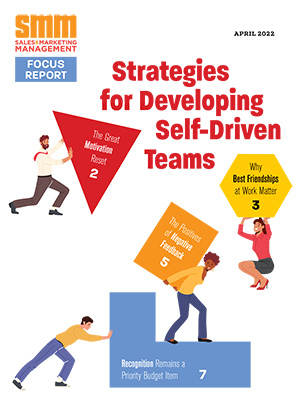When you think of a sales pipeline, what shape begins to emerge in your mind? If you are like most sales leaders and executives, you will see a funnel. The conventional funnel-shaped pipeline has a large opening on one end where potential leads pour into the sales cycle and a gradually tapering funnel that ends with closed business. The idea of the sales funnel is to squeeze out candidates that are not a fit along the way.
While this cone-shaped image of a sales pipeline has a long history, dating to 1898[1], the gradually tapering funnel results in a significant amount of wasted effort on deals that will never make it to the final stage of the pipeline. The longer unqualified deals stay in the pipeline, the more resources your sales team wastes on deals that will never come to fruition.
A New Pipeline Model
So what’s the next evolution of the sales pipeline? A sales pipeline that looks like, well, a pipe-funnel. Our research reveals that the most productive pipelines taper dramatically in the early stages of the sales cycle, closely mimicking a cylindrical pipe with a large entrance. The sleek pipe shape emerges when most, if not all, of the bad deals are removed from the pipeline as early as possible. Our clients have found that the more quickly a pipeline tapers, the better a sales team’s close rate will be. In addition, a quickly tapering pipeline also results in improved forecasting accuracy, as well as increased time for prospecting.
If your sales pipeline is clogged with numerous bad deals that will never turn into sales, it is time to start shaping up your sales pipeline. Below are four best practices to help you get your pipeline in shape.
Define what constitutes a good lead. If your sales force is not clear about what defines a good sales lead for your company, undesirable deals will infiltrate and clog your pipeline. For instance, if your company has developed a go-to-market strategy that includes targeting deals of a minimum size, pursuing any deals less than the minimum size will clog the pipeline and take away from the sales team’s efforts in pursing ideal prospects.
Undesirable deals often disguise themselves as good opportunities. Due to the optimistic nature of salespeople, they can often talk themselves into thinking a small deal can be made big or a bad deal can be made better. However, undesirable deals, no matter how seductive they might be, will not help your company reach its strategic objectives. The way to eliminate undesirable deals is to establish clear criteria for the ideal prospect and develop a well-defined go-to-market strategy that is consistently communicated to your sales force.
Establish early-stage opportunity reviews. Sales managers can play a significant role in directing sellers away from undesirable deals, while coaching them on strategies to pursue the opportunities that align with the company’s go-to-market strategy, but this only works if sales managers become involved early in the game. Too many sales managers wait until a deal is in the final stages of the pipeline to get involved. By this time, many important decisions, such as whether or not the deal is even worth pursuing, have already been made. By establishing early-stage opportunity reviews, sales managers can help sellers make critical decisions early in the process that will prevent unqualified deals from entering the pipeline.
Conduct individual opportunity coaching. In addition to establishing early-stage opportunity reviews, sales managers should also establish a management rhythm that includes regularly scheduled coaching sessions with sellers to discuss individual opportunities that are currently in the pipeline. By having multiple discussions throughout the sales cycle regarding individual deals, sales managers help sellers keep deals progressing through the pipeline.
A recent survey conducted by Vantage Point Performance and the Sales Management Association reveals the importance of sales managers regularly discussing the pipeline with sales reps each month. The survey of 75 companies reveals that sales managers that spent more than four hours each month discussing the pipeline with their reps had the highest year-over-year revenue growth. Second were those that spent three to four hours. Third were those that spent one to two hours, and dead last were the sales forces that reported spending less than one hour per month discussing the sales pipeline with each rep[2].
Identify unwinnable deals. So if a bad deal or two sneaks into your sales pipeline or a previously desirable deal becomes undesirable, don’t panic. There will always be some instances when there is not enough information to disqualify an opportunity until it’s farther down the pipe; however, the key is to recognize when a deal is unwinnable as soon as possible – and let it go.
Letting go of an unwinnable deal can be a challenge for sales managers and sellers alike. Sales professionals tend to have an optimistic “can do” attitude, and letting go of an unwinnable deal is akin to admitting defeat. Yet, letting go of unwinnable deals is exactly what sellers and sales managers must do to streamline their pipeline. Even if there is still a small chance that a deal is winnable, it may not be enough to justify the amount of time and effort required to purse the deal when more viable deals exist. Unwinnable deals may come in the form of:
- Trying to dislodge an incumbent that has had the prospect’s business for 20 years with no signs of dissatisfaction from the prospect
- Encountering severe dissention among the prospect’s decision makers regarding the need for your company’s products or services
- Competing on price alone when your company provides the premium-priced product
Now when you think of a sales pipeline, what shape begins to emerge in your mind? If you see a quickly tapering pipeline, congratulations. You are on your way to improved close rates, more accurate forecasting, and more effective prospecting.
Jason Jordan is partner of Vantage Point Performance and co-author of “Cracking the Sales Management Code”


